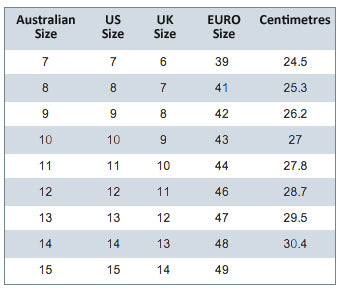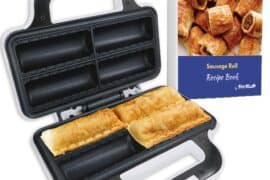Stride in Confidence: Navigating Australian Shoe Sizes vs. US for Kids
G’day, parents! If you’ve ever been on the quest for the perfect pair of shoes for your kiddo only to be baffled by the different sizing standards, you’re not alone. Sizing can be a tricky affair, particularly when placing orders from international brands or shopping while abroad. That’s why we’re here to give a helping hand (or foot) with this upbeat guide to understanding Australian shoe sizes vs. US.
Why Knowing Shoe Sizes Matters
First things first—why is it so important to get shoe sizing right? The correct shoe size ensures your child’s comfort, supports natural foot development, and prevents issues such as blisters or improper gait. Whether you’re traversing the Outback or hitting the playground in the States, every step your child takes should be in comfort!
The Basics of Australian and US Shoe Sizes for Children
Before diving into charts and numbers, it’s essential to understand that Australia and the US follow different measurement systems. Australian sizes are generally based on UK sizing, and they differ from the US sizes by about two sizes. However, this is not a hard rule, especially when considering children’s footwear. Always keep in mind that many factors affect sizing, including the manufacturer, the style of the shoe, and even the shape of your child’s foot.
A Quick Comparison Table
| AU Size | US Size | Foot Length (inches) | Foot Length (cm) |
|---|---|---|---|
| AU 5 | US 6 | 5.1 | 13 |
| AU 6 | US 7 | 5.5 | 14 |
Note: This is a simplified conversion chart and should be used as a starting point. As foot sizing can vary, we always recommend checking with the specific shoe brand’s size chart.
How To Measure Your Child’s Foot Correctly
Measuring your child’s foot may seem daunting, but it can be quite simple with the right tips. Here’s a quick rundown:
- Have your child stand on a piece of paper with their back and heels against a wall.
- Mark the longest part of their foot (from the heel to the tip of the longest toe) on the paper.
- Use a ruler to measure this length in centimeters or inches for precision.
- Refer to a sizing chart from the desired shoe brand to find the corresponding shoe size.
Remember, it’s best to measure your child’s foot at the end of the day as feet tend to expand with activity and heat. Also, measure both feet and use the larger size as a reference since it’s quite common for kids to have one foot slightly larger than the other.
Tips for Shoe Shopping for Kids
Shoe shopping for kids shouldn’t be done in a hurry. Keep these tips in mind to ensure you choose the best fit for your child:
- Always check reviews: Often, other parents will mention if a shoe runs large or small, which can help you make a more informed decision.
- Consider growth room: Kids’ feet grow at lightning speed. While you don’t want shoes too big, a little room to grow is always good.
- Opt for adjustable features: Shoes with velcro, laces, or buckles can be adjusted for a better fit and added comfort.
- Choose reputable brands: Well-known brands are usually more consistent in their sizing, which can make your life a little easier.
As you embark on the shoe size journey, remember, the most critical aspect is your child’s comfort and the assurance that those little toes have room to wiggle and grow. By following this guide, you’ll be well on your way to making those overseas shoe purchases or deciphering foreign shoe charts with absolute confidence and ease. Stay tuned for more in-depth insights into shoe size conversions and happy shoe shopping!

5 Things Parents Should Know When Preparing for Australian Shoe Sizes vs US
- Size Conversion is Not Always Linear: Keep in mind that shoe size conversions between Australian and US sizes aren’t always a direct two-size difference. This can vary further based on the brand and type of shoe, so always refer to the specific shoe brand’s conversion chart for accuracy.
- Understanding the Sizing Method: The Australian shoe size system is based on the UK sizing method, which means it places emphasis on the length of the last (the foot-shaped template over which the shoe is constructed) and not just the foot. In contrast, US sizing is typically based on the length of the child’s foot, measured in inches.
- Account for the Sock Factor: When measuring your child’s foot size and trying on shoes, remember the kind of socks they’ll be wearing with the shoes. Thick socks can affect the shoe size you need to buy, so account for this to ensure a comfortable fit.
- Age-Related Variations: As children grow, their foot size can change quickly and irregularly. This means that relying on age for sizing can lead to mistakes. It’s better to measure their feet regularly, especially before making any shoe purchases, whether American or Australian sizes.
- Industry Variations Can Confound Sizes: Athletic shoes, dress shoes, and casual footwear can all size differently even within the same brand. Something as seemingly simple as a change in design can result in a different shoe fit, so it’s beneficial to consult product-specific sizing advice or trials whenever possible.
Every parent knows the headache of shoe shopping for kids, but with the added layer of understanding international sizing differences, it becomes even more imperative to approach this task with care. Getting it right will save you time, money, and ensure that your child is striding comfortably in their new kicks. Using this guide as a reference point will make all the difference when you’re faced with differing Australian and US shoe sizes. So, measure those little feet, compare the sizes, and prepare for a successful shoe shopping experience!
Checking the Fit Beyond the Size
Ultimately, size is just a number—and it’s how the shoe fits that really counts. Here are a few pointers to ensure a snug and comfortable fit:
- Look for a thumb’s width of space between the end of the shoe and your child’s longest toe to ensure there is room to grow.
- Pay attention to the width of the shoe as well. Your child’s foot should not be compressed on the sides, and their toes should not be bunched up.
- Remember that the heel counter (back of the shoe) should be firm to prevent slippage, and the fastening mechanism should hold the foot securely in place.
- Have your child walk around in the shoes to check for any discomfort, pinching, or slipping issues.
Australian and US shoe sizes can be confusing, but with the right tools and knowledge, you can master the art of finding the perfect fit regardless of where the shoes are made. This way, no matter which side of the pond your shoes come from, you can rest easy knowing those tiny toes are in good hands!
For more great articles please see here. For more information see here
Disclaimer
The articles available via our website provide general information only and we strongly urge readers to exercise caution and conduct their own thorough research and fact-checking. The information presented should not be taken as absolute truth, and, to the maximum extent permitted by law, we will not be held liable for any inaccuracies or errors in the content. It is essential for individuals to independently verify and validate the information before making any decisions or taking any actions based on the articles.




